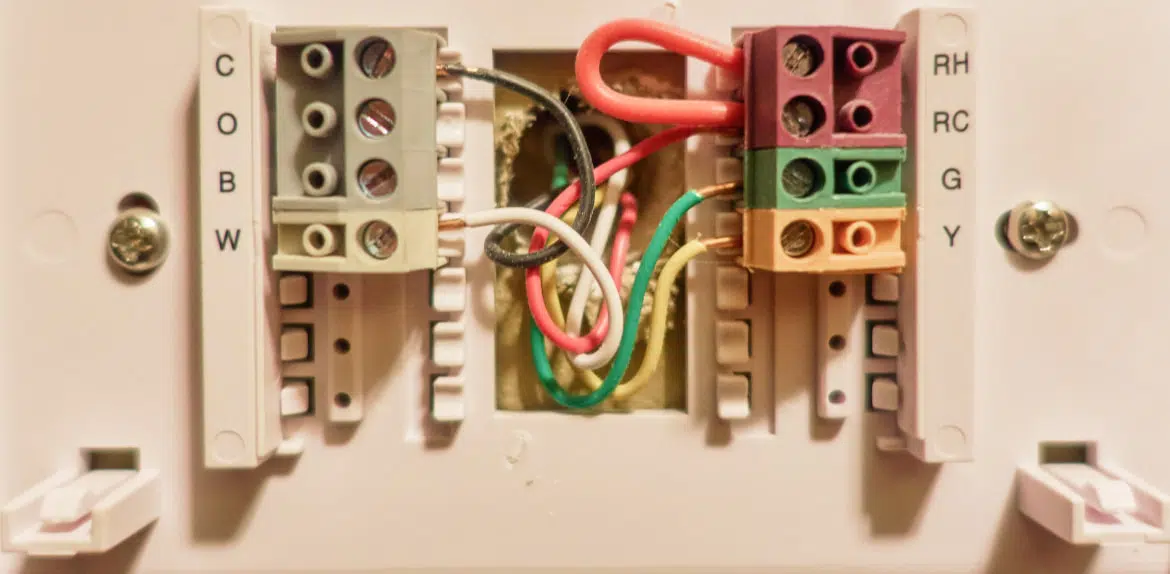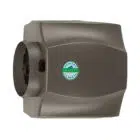
Table of Contents
While it might sound a bit technical, understanding your thermostat wire color code is crucial for keeping your home comfortable and energy-efficient. But worry not, because we are going to guide you through this intricate world. In our new article, we’ll address common problems you may face when dealing with thermostat wires, explain the meaning of each wire color code, and provide practical safety precautions. So, let’s start!
What Are Thermostat Wires and Why Are They Important?
Before we delve into the colorful world of thermostat wire codes, let’s understand the basics. Thermostat wires are the unsung heroes behind your heating, ventilation, and air conditioning systems. They serve as the communication highway between your thermostat and your HVAC equipment. Without them, your thermostat wouldn’t be able to tell your heating or cooling system when to turn on or off, and your comfort level would suffer.
But why do we have thermostat wire color codes in the first place? Well, imagine if all wires were the same color – it would be like having a jumble of unmarked cables behind your TV. You wouldn’t know which wire connects to what, and chaos would ensue. So, the thermostat wire color code provides a clear and standardized system for identifying wires and their functions.
Common Problems You May Face with Thermostat Wiring

Before we dive into the intricacies of thermostat wiring, it’s crucial to understand the common pitfalls you may encounter when dealing with these wires. These issues can disrupt your HVAC system’s functionality and compromise your comfort. Let’s explore these challenges together.
- Problem 1. Incorrect Wiring: One prevalent issue is incorrect wiring. Homeowners often find themselves in a tangle of wires without a clear understanding of which wire goes where. This can lead to an HVAC system that’s out of sync and energy bills that are higher than they should be.
- Problem 2. Compatibility Issues: Another challenge during thermostat installations is compatibility issues. Different HVAC systems and thermostats may use slightly different color codes. Without the right guidance, you might end up with a mismatched setup that leads to more problems than solutions.
- Problem 3. Inadequate Labeling: Over time, the labels on thermostat wires can fade, making it challenging to distinguish one wire from another. Inadequate labeling can result in confusion during installation or troubleshooting, and nobody wants a headache when dealing with their HVAC system.
- Problem 4. Safety Concerns: Now, let’s address the elephant in the room – safety concerns. HVAC wiring involves electrical currents, albeit low-voltage ones. Still, handling wires without the right precautions can lead to electrical shocks or, worse, damage to your HVAC system.
At HVAC Service Solutions, we specialize in resolving all aspects of HVAC system maintenance and thermostat wiring. Our experienced technicians are here to help you troubleshoot, install, or upgrade your thermostat with precision and safety. Don’t hesitate to reach out for our professional support via the link below.
Thermostat Wire Color Code: What Does It Mean
Okay, now that we’ve covered the problems, it’s time to decode the thermostat wire color code. Let’s demystify those wires:
Red (R): The Power Player
When you encounter red wires in your thermostat wiring, they are typically divided into two categories: Rc and Rh.
- Rc (Cooling): The Rc wire serves as the power source for your cooling system. When your thermostat calls for cooling, the Rc wire sends the signal to your air conditioning compressor or condenser unit. It’s like the conductor of an orchestra, ensuring your home remains comfortably cool during the scorching summer months.
- Rh (Heating): Conversely, the Rh wire takes center stage when it’s time to heat your home. When your thermostat signals the need for warmth, the Rh wire connects to the heat relay or valve, activating your heating system. It’s the reason you can cozy up indoors during cold winters.
White (W): The Warm Embrace
When you see the white wire, think of warmth. It’s typically associated with heating systems, and it connects to the heat relay or valve. So, when your thermostat calls for heat, it’s the white wire that springs into action.
Yellow (Y): The Cool Customer
Need to chill out during a hot summer day? That’s where the yellow wire comes in. It’s responsible for controlling your cooling system and connects to the air conditioning compressor or condenser unit.
Orange Wire (O): Reversing Valve Control
The orange wire (O) is essential for heat pump systems. When your thermostat calls for cooling, the orange wire activates the reversing valve, allowing your heat pump to switch into cooling mode. In heating mode, this wire reverses the refrigerant flow, enabling your heat pump to provide warmth. While not present in all thermostat setups, the orange wire is crucial for heat pump systems, ensuring year-round comfort.
Green (G): The Air Whisperer
Ever wondered how the fan turns on and circulates air through your home? It’s all thanks to the green wire. This wire connects to the fan relay and ensures that your living spaces stay comfortably breezy.
Blue or Black (C): The Unsung Hero
Not every HVAC system uses the blue wire, but when it’s there, it’s crucial. The blue wire serves as the common wire, providing a return path for electrical current. This helps stabilize your thermostat’s operation and keeps everything running smoothly.
Wire Color | Terminal | Function |
|---|---|---|
Red (Rc) | Power | 24-volt power supply for cooling |
Red (Rh) | Power |
24-volt power supply for heating
|
White (W) | Heat | Heating system activation |
Yellow (Y) | Cool | Cooling system activation |
Orange (O) | Heat/Cool | Reversing valve control (for heat pumps) |
Green (G) | Fan | Fan control for air circulation |
Blue (C) | Common | Common wire for electrical return path |
By understanding the thermostat wire color code, you can unlock the secrets of your HVAC system’s operation. Each wire color plays a vital role in maintaining your comfort, from heating to cooling and everything in between.
Safety Precautions When Checking Thermostat Wire Color Code

Your safety should always be the top priority when dealing with thermostat wires. Before we get into the nitty-gritty of precautions, let’s emphasize the importance of taking the right steps to ensure your well-being and the proper functioning of your HVAC system.
1. Turn Off Power: Before you lay a finger on those wires, remember to turn off the power to your HVAC system. Safety should always come first, and this step significantly reduces the risk of electrical accidents.
2. Label Wires: To avoid confusion and potential mishaps, it’s essential to label your wires clearly. Colored tape or labels can help match each wire with its corresponding function accurately.
3. Consult Manuals: Don’t underestimate the value of those HVAC system and thermostat manuals! They contain essential information about wire color codes and specific instructions for your system. Always keep them handy.
4. Seek Professional Help: If you ever feel unsure or uncomfortable handling thermostat wiring, it’s best to call in a professional HVAC technician. They have the expertise and tools to ensure a safe and accurate installation.
Remember that attempting to check or handle the wires yourself can be dangerous. It’s always a wise choice to prioritize safety and consider seeking professional help. At HVAC Service Solutions, we have the expertise and experience to ensure a safe and accurate thermostat installation or troubleshooting process. Book an appointment with our HVAC professionals via the link below.
Conclusion
To conclude, your thermostat wire color code is like a secret language that your HVAC system understands. By understanding it, you can avoid common problems, ensure compatibility, and most importantly, maintain a safe and efficient HVAC system.
Remember, your comfort and safety are paramount, so never hesitate to reach out to professionals like HVAC Service Solutions for all your thermostat wiring needs in Canada. Contact us today to take control of your HVAC system and enjoy the comfort and savings it can provide.
Share


















